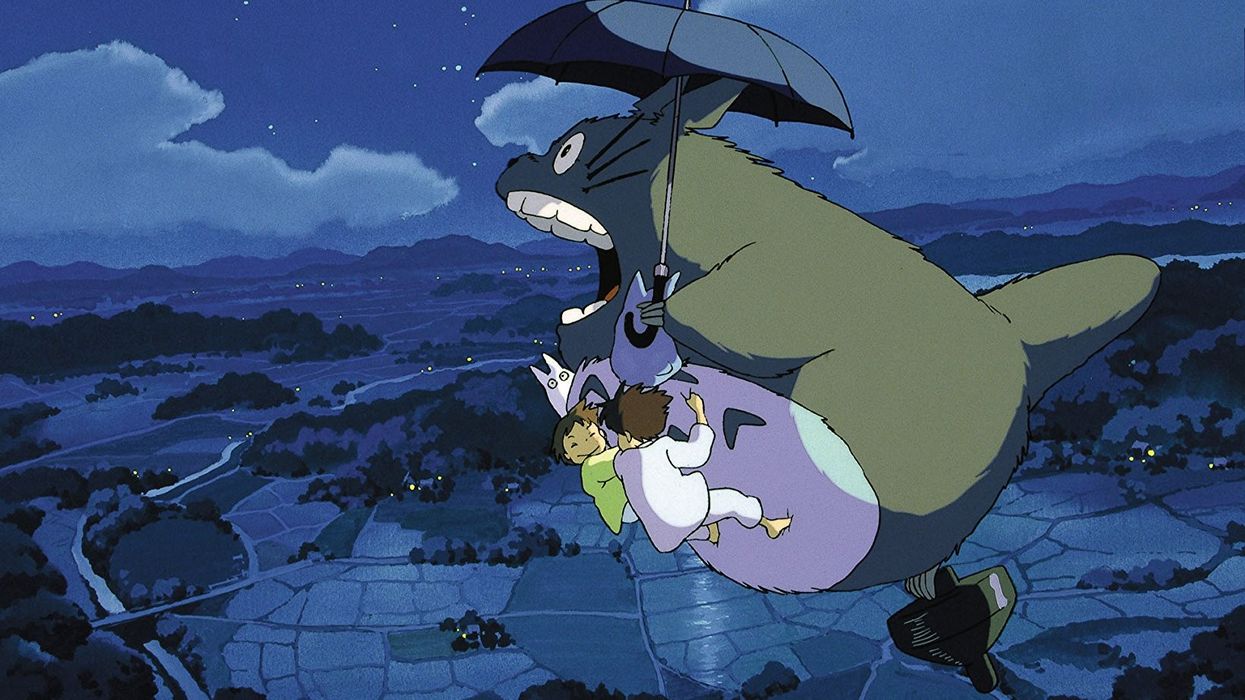Watch: Why We All Need a Neighbor Like Miyazaki's Totoro
Find out how Hayao Miyazaki crafted one of his most beloved characters.

You'd be hardpressed to find a person who has seen Hayao Miyazaki's 1988 animated fantasy film My Neighbor Totoro and didn't absolutely love it. Even if dedicated Studio Ghibli fans were left out of the equation, audiences both young and old have fallen in love with the likes of Satsuki, Mei, and Catbus, but no character has captured hearts and imaginations quite like the big, furry, forest keeper Totoro.
In this video essay, the team over at ScreenPrism explores the architecture of Totoro's character to explain how the woodland creature works on a narrative level, why it has become such a huge cultural icon, as well as how we could all benefit from having a neighbor like Totoro around to lift our spirits.
Miyazaki's films resonate with people for many reasons, but his celebration of innocence and childhood has to be one of the biggest. Kids love films like Howl's Moving Castle and Ponyo because they appeal to the wonder that is already active within them, and adults love them because they remind them of the wonder they might've lost sight of in the chaos of growing up. And My Neighbor Totoro is no different.
The film contains many similar themes and motifs that we've seen in other films by Miyazaki, including flying (representing freedom), strong female characters, and humans connecting to nature through mystical powers, but here are a few concepts that My Neighbor Totoro specifically introduces to its audience.
Laugh at your fears
Children have many things to be scared of, like monsters, storms, and being alone. When we first meet Satsuki and Mei, they are dealing with all of these things, primarily the fear that their mother won't pull through the illness that has already taken her away from them. When Totoro comes along when the girls are alone at a bus stop on a dark and rainy night, his presence is like that of an enormous stuffy given to a child to soothe them. His demeanor, his big furry body, and his magical connection to nature give the girls respite from the tragedy that has befallen them.

Don't act like adults
The transition from childhood to adulthood is often marked with moments of great sacrifice from the things we held dear as kids. We cry less, we worry more, we don't live with the wonder that seemed to shape a lot of our joy and curiosity—we make a contractual agreement with our future selves that if we become more practical and restrained, we will gain the rewards that adulthood has to offer. However, these great sacrifices are made in small deposits in our earliest years, as we can see in how Satsuki and Mei misinterpret bravery as not showing emotion "like an adult." Totoro is there to remind them that expressing emotions is not only healthy but is a sign of courage in a world that often suppresses that which it fears.
Have faith in natural magic
Miyazaki isn't shy about revealing the awesome beauty and power of nature in his films. In My Neighbor Totoro, we see the forest as a place where not only magical spirits abide but where real life magic turns tiny acorns into mighty oak trees. That drastic evolution from seed to snag parallels that of our own human life from birth to death. Totoro shows Satsuki and Mei while growth and change may not always be pleasant, it does make one stronger, like a single sapling slowly giving life to a sprawling forest. And even when it is pleasant, growth and change take time, a lesson we learn in the mirroring of the girls' garden and their mother. Mei watches the garden waiting for the first sign of life much like she waits for her mother to make a recovery from her illness. The film asks us to respect the natural timing of things, to not despair when progress isn't visible, and to have faith in that which we cannot see.
Miyazaki created Totoro to not only be a protector for those who are unable to face their fears but also a guide to show them where to look for sources of bravery. I'm sure we'd all be lucky to have that big, furry, forest keeper as our neighbor.
Source: ScreenPrism











